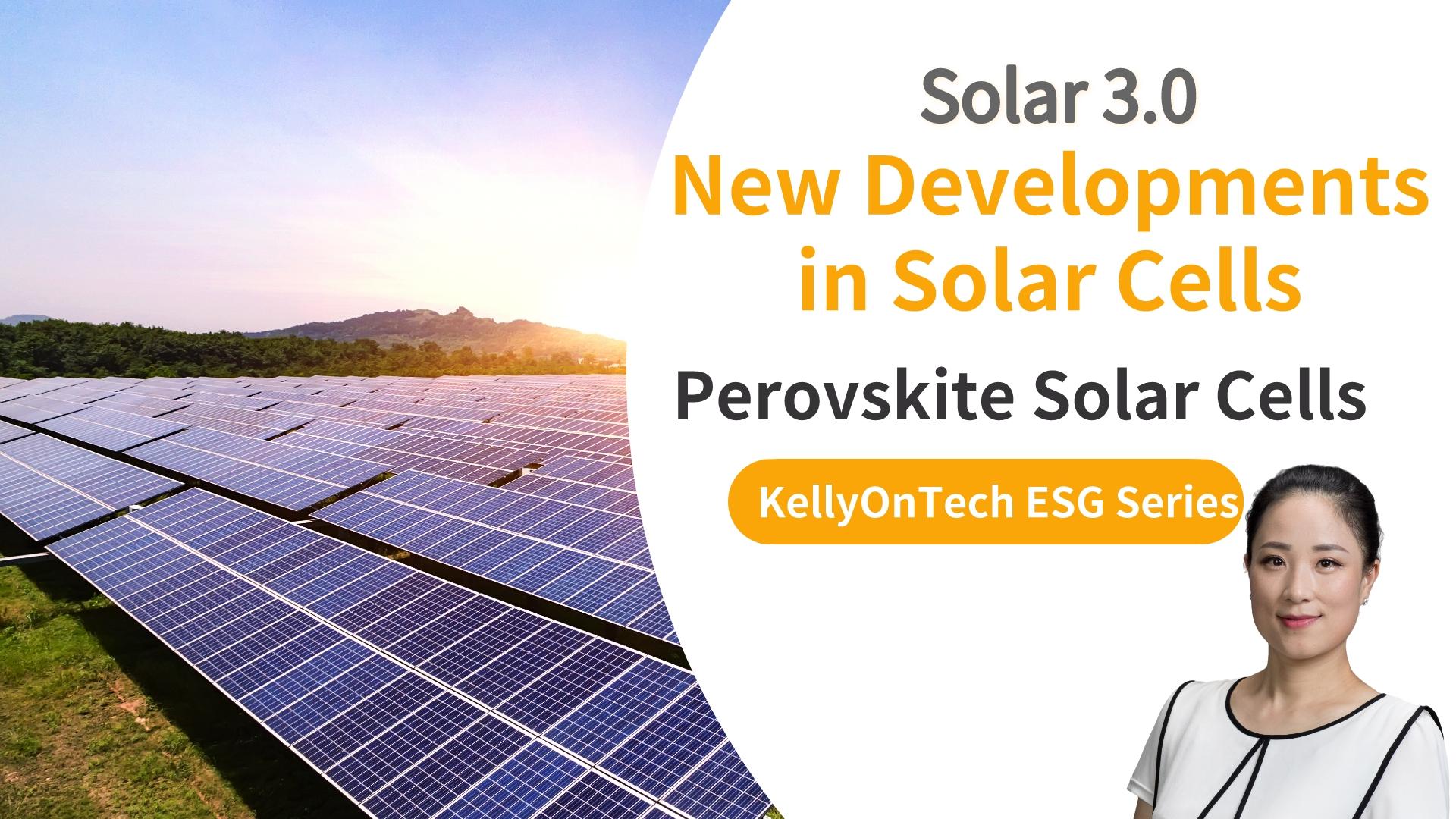Solar 3.0 Perovskite Solar Cells KellyOnTech ESG Series
This issue talks about the new progress of solar cells. My first job when I officially entered the technology circle was related to solar power supply systems. At that time, the project was to provide a solar power supply system for the islands in Thailand, and from then on, I started my journey of riding the wave of technology.
One of the biggest difficulties of solar cells at that time, and it still remains after so many years, is the low photoelectric conversion efficiency. The energy conversion efficiency of monocrystalline silicon solar cells used in those days has only reached about 20% now. The scene of taking a speedboat across the island and braving the scorching sun with the engineering team to adjust the angle of the solar panels is still fresh in my memory.
Why Can Distributed Photovoltaics Return to its Peak in 2022?
There are two main technical routes for solar cells: crystalline silicon (monocrystalline silicon and polycrystalline silicon) and thin-film solar cells. It is said on the Internet that distributed photovoltaics can return to its peak in 2022, which refers to a breakthrough in thin-film solar cell technology. Ultimately, it is a breakthrough in the field of materials science.
To put it simply, a thin-film solar cell COATS a layer of material that can absorb solar energy on the substrate.
Many kinds of materials have been tried before, such as graphite, gallium arsenide, cadmium telluride, and so on. Later, a mineralogist Lev Perovski studied a material called Perovskite, which is named after him.
Why Is the Industry so Excited about Perovskites?
First, the photoelectric conversion efficiency of perovskite cells has been significantly improved. At the end of 2022, the Helmholtz Center (HZB) perovskite tandem solar cell in Berlin, Germany broke the world efficiency record with a certified efficiency of 32.5%.
It has been more than ten years since perovskite was used for photovoltaic power generation, and the initial photoelectric conversion efficiency was only 3.8%. Why can the conversion efficiency be greatly improved? The reason is that a perovskite solar cell (PSC) is a type of solar cell that contains a compound of the perovskite structure. Since it is a compound, it is more flexible to mix and match materials. The most common approach is to mix organic-inorganic lead or tin halide-based materials as the light-harvesting active layer. In contrast, the material of crystalline silicon solar cells is single and can only be purified.
The advantage of perovskite solar cells is that the manufacturing process is not complicated, the cost is low, and it is easy to recycle, so the payback period is relatively shorter than investing in crystalline silicon solar cells.
But perovskites are not without their drawbacks. A notable drawback of the material is that it wears away when exposed to light, heat, moisture and oxygen after months of use, which can lead to the generation of toxic lead.
So now major manufacturers are working to reduce this toxicity.
Commercialization Process of Perovskite
Switzerland-based heterojunction solar module manufacturer Meyer Burger has signed a multi-year collaboration agreement with Switzerland-based Swiss Center for Electronics and Microtechnology (CSEM) to develop tandem perovskite solar cell technology. This also includes the aforementioned Helmholtz Center (HZB), which focuses on the industrialization of perovskite stacked solar cells and modules.
Meyer Burger draws on its long tradition of proprietary development and has a broad portfolio of processes, technologies and production technologies for the potentially large-scale production of in-house tandem solar cells and modules. This includes the basic manufacturing process and mechanics of silicon-based perovskite tandem solar cells, as well as the corresponding solar modules with Meyer Burger’s proprietary SmartWire connection technology, to accelerate the commercialization of perovskite solar energy.
In the end, I would like to say that technology is constantly improving. Some problems cannot be solved in the short term, but do not be discouraged. Do what we can do. There will always be a day when the technology matures, and the significance of what we are doing now is reflected in the process of adding bricks and mortar.




